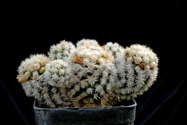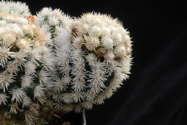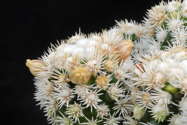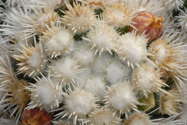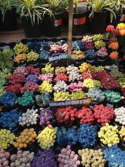This is a form of what is more properly known as M. vetula subsp. gracilis. It forms clumps of loosely attached offsets, so both shipping and repotting are likely to result in some inadvertent propagation. The form has circulated to some extent as a “monstrose form” but it is simply a form with clusters of short 3 mm (1/8"), snowy-white spines. However, close inspection will reveal that new areoles develop the outermost radials first. Areoles in the flowering zones that ring the upper portions of the stems experience a flush of growth that imparts a tawny tint to developing spines and wool. After flowering, the older areoles again go white after achieving their full complement of more than 50 spines, and then resemble white-spined sea urchins. Recently certain nurseries have taken to spray-painting this and other succulents with unnatural colors for resale to gullible buyers. Then again, if you like this look, you are welcome to spray them the color of your choice (cactus show judges may frown upon this). Subspecies gracilis is native to the central Mexican states of Hidalgo and Querétaro where it grows at elevations of 1200 to 1850 m on limestone. It is not known if forms like ‘Snowflake’ occur in nature or if it is of horticultural origin. HBG 123345. $5.
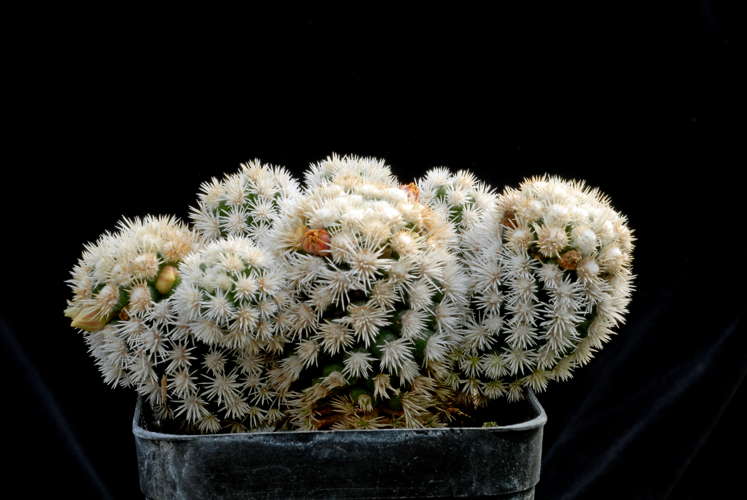
Published in the Cactus and Succulent Journal, Vol. 87 (3), May - June, 2015
